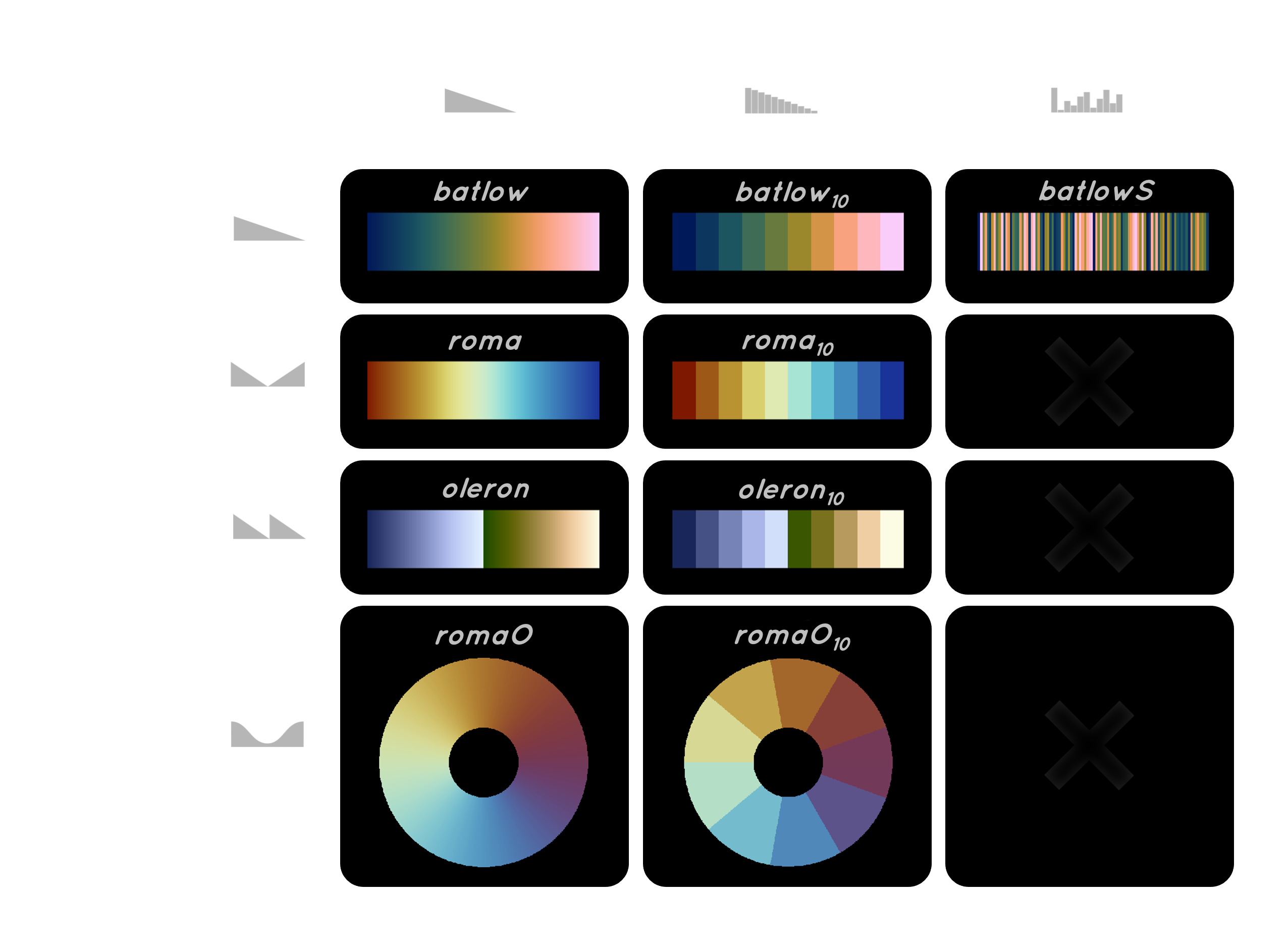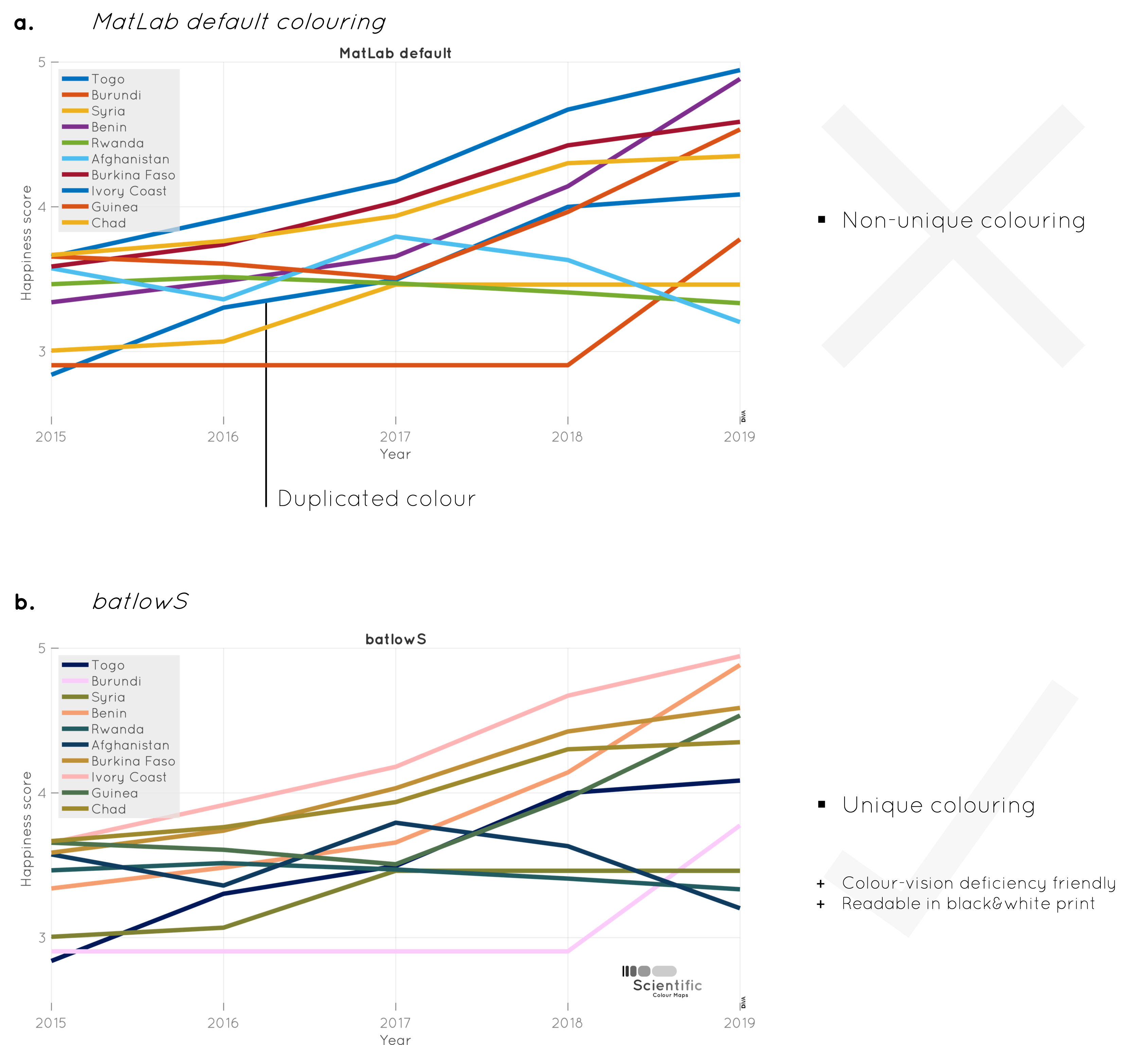
Categorical colour maps contain a high number of unordered unique colour values. They are intended to colour multiple individual data points, or entire graphs, to make them distinguishable from each other. Categorical colour maps can be applied to almost any type of graph, whether this is a scatter plot with multiple points, a line plot with multiple lines, a bar plot with multiple bars, or other types of graphs. The categorical type is therefore wonderfully versatile and widely used. Scientifically-derived categorical colour maps are, however, almost non-existent. Individual palettes featuring the scientific attributes mentioned in the main manuscript are hardly available, and if they are, only contain very few (e.g., 5-10) colour values. In the age of big data, this is a major drawback.
The categorical Scientific colour maps, like batlowS (see above), are based on the original, continuous Scientific colour maps and therefore maintain all relevant scientific characteristics like CVD friendliness and grey-scale readability. They are provided with up to a hundred individual colour values, with the individual colours having maximal colour and lightness contrast with respect to the total number of colours used.
-
Designed for unordered data

